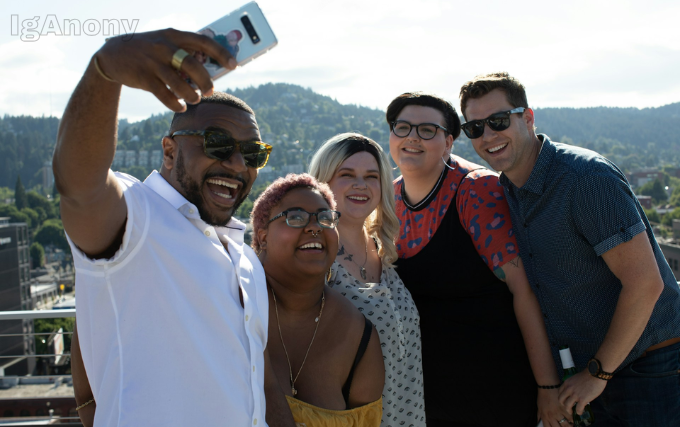Why Nurturing Long-Term Partnerships with Creators Pays Off
The creator economy has reshaped the way brands connect with their audiences. But why do short-lived collaborations often fail to achieve lasting impact? How can brands build deeper relationships that foster loyalty and authenticity over time? And what makes long-term creator partnerships a more sustainable approach than one-off campaigns? These questions highlight that, in today’s landscape, consistency and trust are far more powerful than fleeting visibility.
Why are long-term partnerships more effective than one-off campaigns?
One-off campaigns may deliver a burst of visibility, but they rarely establish meaningful connections with audiences. Long-term partnerships, by contrast, create a sense of continuity where the creator genuinely becomes an ambassador for the brand. Over time, this repeated exposure builds trust, as followers see the collaboration as a natural extension of the creator’s lifestyle rather than a paid interruption. When audiences repeatedly encounter the brand in authentic contexts, their perception shifts from scepticism to familiarity and, eventually, to loyalty. For businesses seeking to embed themselves in a community, nurturing consistency is a far more strategic approach. Platforms like kolsquare provide valuable tools for identifying the right creators and managing these ongoing relationships effectively.
Kolsquare is an influence marketing platform that connects brands with content creators. With its international database and advanced analytics tools, it helps businesses identify the most relevant profiles for their goals, manage campaigns efficiently, and measure the impact of collaborations in real time. By centralizing the entire process—from influencer discovery to performance evaluation—Kolsquare makes it easier to build authentic and long-lasting partnerships, tailored to both small businesses and global brands.
This ability to track performance and engagement across multiple collaborations ensures that partnerships remain relevant and mutually beneficial. In addition, consistent partnerships make it easier for brands to plan their marketing calendars in advance, avoiding the stop-start effect of sporadic campaigns. They also allow for a smoother flow of creative content, as creators understand the brand voice more deeply with time. Ultimately, continuity transforms marketing from a series of isolated interactions into a long-term dialogue.
How does authenticity grow with time?
Authenticity cannot be manufactured overnight; it requires patience and repetition. In the early stages of a collaboration, audiences may question whether the endorsement is genuine. But as the creator continues to use and share the brand’s products over weeks and months, scepticism fades. Consistent promotion demonstrates that the relationship is not merely transactional, but one rooted in genuine appreciation. This long-term exposure allows creators to integrate the brand into their personal storylines, weaving it into content in a way that feels natural rather than forced. The longer the partnership lasts, the more seamless the connection becomes, strengthening both credibility and influence. Over time, audiences begin to associate the brand with the creator’s identity, reinforcing their trust in both. This authenticity also shields the collaboration from accusations of opportunism, which are common in short-lived campaigns. By fostering genuine alignment, long-term partnerships enhance brand equity in ways that quick wins cannot.
What role does trust play in strengthening audience loyalty?
Trust is at the heart of any long-term relationship, whether between individuals or between a brand and its community. When followers see a creator consistently endorse a product, they begin to associate that brand with reliability. The trust the creator has built over time transfers directly to the brand, enhancing its reputation. This form of borrowed credibility is far more persuasive than traditional advertising, as it is rooted in human connection. Long-term partnerships also allow brands to weather occasional criticism or missteps more effectively, since trust cushions the impact. Over time, loyalty deepens into advocacy, where audiences not only purchase but actively recommend the brand themselves. This trust becomes a competitive moat, protecting the brand from rivals trying to win over the same community. It also encourages repeat purchases, as consumers are reassured by the ongoing endorsement of a figure they respect. Ultimately, trust forged through consistency lays the foundation for sustainable business growth.
Why do long-term collaborations deliver better ROI?
From a financial perspective, one-off campaigns can be costly and inefficient. Each time a brand launches a new partnership, it must invest in negotiation, briefing, production and measurement. Long-term collaborations spread these costs across multiple activations, creating economies of scale. Moreover, the performance of campaigns typically improves over time as both brand and creator refine their approach. Data from repeated collaborations allows for better targeting, stronger messaging and more accurate measurement of results. This ongoing optimisation often translates into higher engagement rates and improved conversion. By thinking long term, brands reduce wasted spend and achieve more sustainable returns on their influencer investments. As trust builds, conversion rates often rise because audiences feel reassured by repeated exposure. Additionally, long-term partnerships provide a more predictable revenue stream for brands planning their budgets. In this way, ROI is not only higher but also more stable, creating a virtuous cycle of investment and return.
How do creators benefit from lasting relationships?
The advantages of long-term collaborations are not one-sided. For creators, stability and continuity are highly valuable, as they provide consistent revenue and reduce the uncertainty of constantly seeking new partnerships. Such relationships also allow creators to plan their content more strategically, building storylines that integrate the brand naturally over time. This leads to higher-quality content and a more authentic representation of the product. In addition, long-term collaborations often provide opportunities for co-creation, where creators have a say in product development or campaign design. This sense of involvement not only strengthens the relationship but also fosters genuine enthusiasm that resonates with audiences. When creators feel invested, they deliver better work, which directly benefits the brand. Moreover, creators who work with the same partner over time are less likely to accept conflicting sponsorships, ensuring exclusivity. In return, brands gain ambassadors who are truly committed, making the collaboration more valuable on both sides.
How do long-term partnerships adapt to market changes?
Markets and consumer preferences evolve quickly, and one-off campaigns can easily become outdated. Long-term collaborations, however, provide the flexibility to adapt. As trends shift, creators can adjust their content while maintaining consistency in their brand relationships. This adaptability ensures the partnership remains relevant even as the landscape changes. For brands, the ability to evolve alongside trusted creators is invaluable, as it keeps campaigns in tune with cultural conversations. Over time, this agility creates resilience, enabling partnerships to outlast temporary trends and align with long-term business objectives. Long-standing collaborations also give brands access to insights on emerging consumer behaviours, captured through the creator’s community. This knowledge allows companies to pivot quickly, rather than starting from scratch with a new partner. Ultimately, the continuity of long-term partnerships creates a built-in mechanism for staying ahead of change.
What is the future of brand-creator relationships?
The trajectory of the creator economy points towards deeper, more sustained collaborations. As audiences grow more sceptical of one-off promotions, the value of long-term relationships will only increase. Technology and data-driven platforms will continue to play a key role, providing brands with insights into performance, audience alignment and ROI. Creators themselves will also become more selective, choosing to align with brands that share their values and vision. The future lies in partnerships that are not just transactional but symbiotic, where both parties grow and evolve together. In this model, long-term collaboration becomes less of a tactic and more of a cornerstone of brand strategy. As regulation tightens and transparency becomes a standard, authentic long-term bonds will be the safest route for brands. Meanwhile, audiences will gravitate towards those creators whose partnerships feel consistent and genuine. This convergence of trust, data and authenticity will redefine the future of influence.
—
Long-term partnerships transform creators from temporary endorsers into trusted brand ambassadors. By building authenticity, trust and adaptability over time, these collaborations deliver sustainable value. In the creator economy, patience and consistency are the keys to lasting influence and impact.







